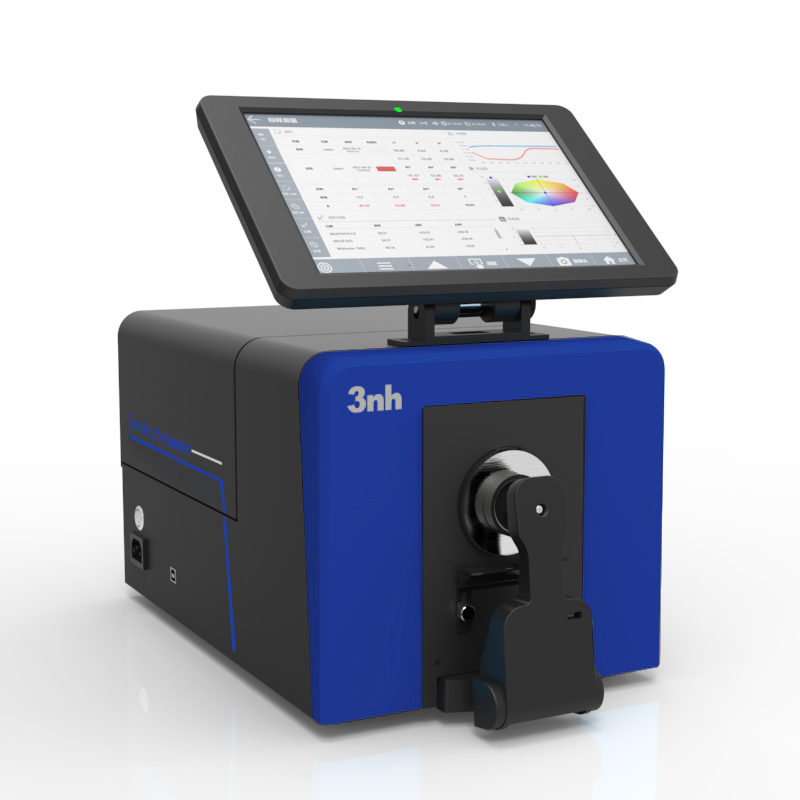FLESH TONE TEST CHART REFLECTANCE
2017-10-25 Click:484
The flesh tone test chart is designed for evaluating the flesh tone rendition of electronic cameras.
The chart developed by the BBC London is a 4 color offset print. The spectral remission of the flesh tones approximates the natural flesh tone very well. Although the steep rise at the wavelength of about 580nm is somewhat to low (see Ill.2). The background is illuminated evenly but not absolutely neutral.
With this chart several color cameras can be adjusted simultaneously to an approximate uniform rendition of flesh tones. First cameras have to be adjusted with a logarithmic gray scale (TE108; TE109; TE153). By using the TE109 the change to be BBC61 can made without changing f-stop. In combination with the T13 the chart is suited for testing flesh tone rendition of cine color films.

The chart has to be illuminated in a way that avoids glossy effects on the surface for all cameras involved. To achieve this, that chart should be tilted forward up to 20°. For this a foldback-clips can be used. Th e chain can be used for fixing the test chart in its tilted position (e.g. at the upper cross bar of the table mount SAD460). The length of the chain and thus the angle of the test chart can be varied by putting the side pieces into other links of the chain. A 20° tilt is reached when the upper rim of the chart is 17cm of the vertical position.
To delay the inevitable fading of the colors the chart should be illuminated if possible with light of a low portion of UV radiance. After use, the chart should be covered with the plastic cover.
The chart is available only in the A540 version.

The chart developed by the BBC London is a 4 color offset print. The spectral remission of the flesh tones approximates the natural flesh tone very well. Although the steep rise at the wavelength of about 580nm is somewhat to low (see Ill.2). The background is illuminated evenly but not absolutely neutral.
With this chart several color cameras can be adjusted simultaneously to an approximate uniform rendition of flesh tones. First cameras have to be adjusted with a logarithmic gray scale (TE108; TE109; TE153). By using the TE109 the change to be BBC61 can made without changing f-stop. In combination with the T13 the chart is suited for testing flesh tone rendition of cine color films.

The chart has to be illuminated in a way that avoids glossy effects on the surface for all cameras involved. To achieve this, that chart should be tilted forward up to 20°. For this a foldback-clips can be used. Th e chain can be used for fixing the test chart in its tilted position (e.g. at the upper cross bar of the table mount SAD460). The length of the chain and thus the angle of the test chart can be varied by putting the side pieces into other links of the chain. A 20° tilt is reached when the upper rim of the chart is 17cm of the vertical position.
To delay the inevitable fading of the colors the chart should be illuminated if possible with light of a low portion of UV radiance. After use, the chart should be covered with the plastic cover.
The chart is available only in the A540 version.






